Discover the Fascinating Types of Huskies: Unravel the Diversity and Beauty of These Majestic Breeds
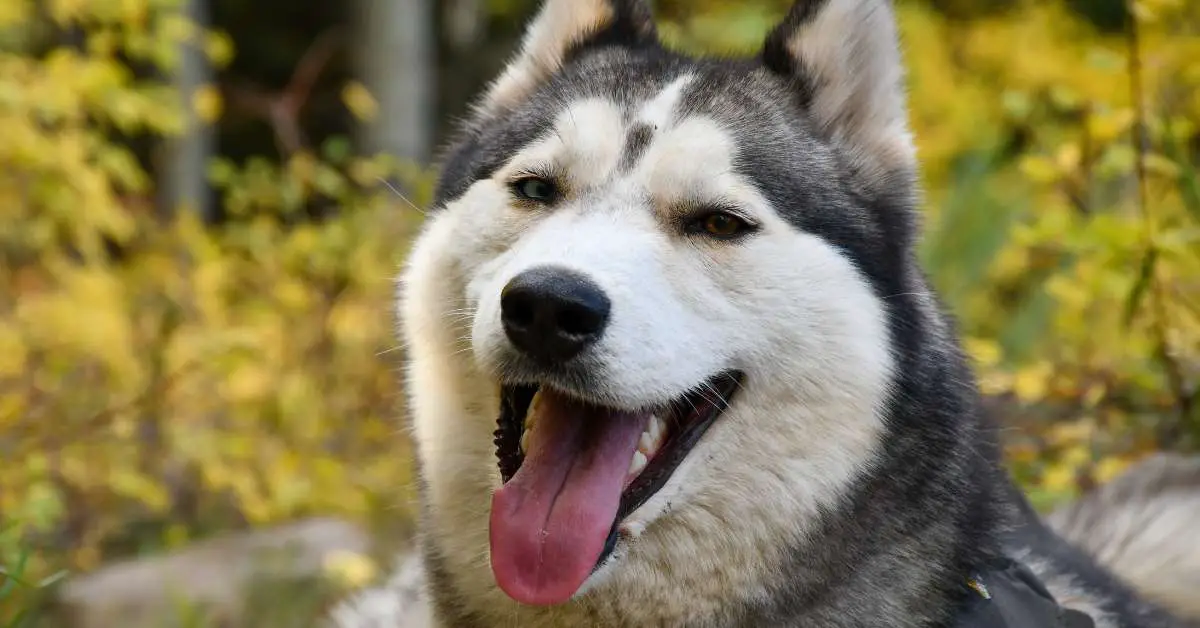
Huskies are renowned for their stunning appearance, remarkable endurance, and intriguing personality characteristics.
Originating from the Arctic regions, these sled-pulling dogs have captured the hearts of countless dog enthusiasts worldwide.
In this blog post, we embark on a fascinating journey to explore the different types of huskies and delve into their unique characteristics.
Huskies belong to the larger umbrella category of working dogs, and their diverse breeds offer a range of distinct traits and appearances.
From the well-known Siberian Husky to the lesser-known Alaskan Malamute and the elusive Greenland Dog, each breed has its own story to tell.
Throughout history, huskies have played vital roles in transportation, exploration, and companionship.
Their innate athleticism, intelligence, and friendly nature make them suitable for a variety of activities, including dog sledding, agility competitions, and even therapy work.
10 Beautiful Types of Husky Breeds (With Pictures)
Huskies have long captivated the hearts of dog lovers worldwide with their striking appearances, captivating blue or multicolored eyes, and energetic personalities.
Originating from the Arctic regions, these canines were bred for endurance and efficiency in harsh conditions.
Over time, various breeds have emerged, each showcasing its own distinct traits and characteristics.
In this comprehensive guide, we will delve into the fascinating world of huskies and explore 10 of the most beautiful husky breeds.
1. Siberian Husky

1. Appearance: Siberian Husky is known for their striking wolf-like appearance. They have a well-muscled body, erect ears, and a thick double coat that comes in a variety of colors and markings.
Their most captivating feature is their mesmerizing blue or multicolored eyes.
2. Temperament: Siberian Husky is friendly, outgoing, and affectionate. They have an independent nature and can be quite mischievous at times.
They are known for their love of people and tend to get along well with children and other dogs.
3. Intelligence and Training: Siberian Husky is intelligent dogs but can also be stubborn and independent. They have a strong prey drive and may have a tendency to wander or chase small animals.
Early and consistent training, along with positive reinforcement techniques, are crucial for instilling good manners and obedience in these intelligent canines.
4. Socialization: Proper socialization from a young age is important for Siberian Husky. They should be exposed to various people, animals, and environments to ensure they grow up to be well-adjusted and friendly adults.
Early socialization can help prevent behavioral issues and promote a happy and confident dog.
5. Health: Siberian Husky is generally a healthy breed but may be prone to certain health conditions such as hip dysplasia, eye diseases, and certain genetic disorders.
Regular veterinary check-ups, a balanced diet, and proper exercise can help maintain their overall health and well-being.
6. Family Companionship: Siberian Husky can make wonderful family pets when provided with the love, attention, and exercise they require.
They are loyal, and playful, and enjoy being a part of family activities. However, their high energy level and independent nature may not be suitable for every household.
2. Alaskan Malamute
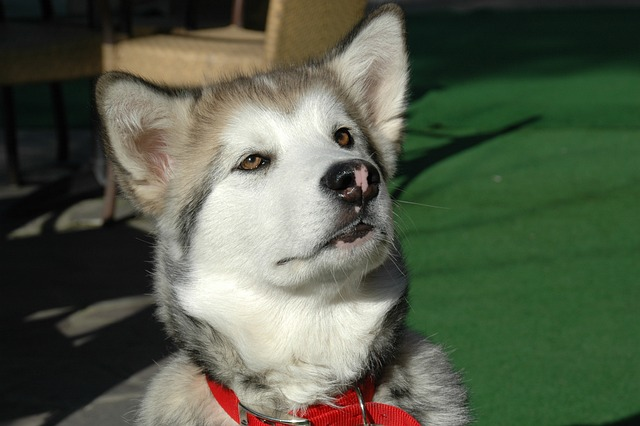
1. Appearance: Alaskan Malamute is a large and powerful dog with a sturdy build. They have a thick double coat that provides insulation in cold weather.
Their coat can be in various colors, including shades of gray, black, and sable. They have expressive almond-shaped eyes that are usually brown.
2. Temperament: Alaskan Malamute is known for its friendly and affectionate nature. They are highly loyal and form strong bonds with their family members.
They are generally good with children and can be gentle and patient. However, they may have a strong prey drive and may not be suitable for homes with small animals.
3. Intelligence and Training: They are intelligent dogs but can be independent and strong-willed. They respond best to positive reinforcement training methods and consistency.
Early socialization and obedience training are essential to help them become well-behaved and obedient companions.
4. Socialization: Proper socialization is important for Alaskan Malamutes. Early and ongoing socialization with different people, animals, and environments can help them become well-rounded and well-behaved dogs.
It can also help prevent any potential behavioral issues that may arise from a lack of socialization.
5. Health: They are generally a healthy breed but can be prone to certain health issues such as hip dysplasia, eye problems, and certain genetic disorders.
Regular veterinary check-ups, a balanced diet, and exercise can help maintain their overall health and well-being.
6. Family Companionship: Alaskan Malamutes can make wonderful family pets for active and experienced owners. They thrive in homes where they receive plenty of love, attention, and exercise.
They are known for their loyalty and can be excellent companions and protectors.
3. Alaskan Husky

1. Appearance: Alaskan Husky is not a recognized breed but rather a type of dog bred for sledding and racing purposes. As a result, their appearance can vary widely.
They come in different sizes, coat lengths, and colors. They have a strong and athletic build, designed for speed and endurance.
2. Temperament: Alaskan Husky is known for its high energy and working drive. They are intelligent, focused, and determined.
They possess a friendly and sociable nature, but their intense drive for running and pulling may make them less suitable for a typical pet household.
3. Intelligence and Training: Alaskan Husky is an intelligent and quick learner. However, their independent nature and strong prey drive can make them challenging to train.
Consistent, positive reinforcement training methods are crucial to channel their energy and drive effectively.
4. Socialization: Socialization is important for Alaskan Huskies to ensure they interact well with people, other animals, and new environments.
Early socialization helps them develop good manners and prevents potential behavioral issues. Exposing them to various situations and providing positive experiences is essential.
5. Health: Alaskan Husky, being a mixed-breed type, generally has fewer health issues than purebred dogs. However, they can still be prone to conditions such as hip dysplasia, eye problems, and exercise-induced injuries.
Regular veterinary care, a nutritious diet, and proper conditioning are essential for their well-being.
6. Working and Racing: Alaskan Huskies are primarily bred for their working and racing abilities. They are highly valued for their speed, endurance, and ability to perform in sled dog competitions and long-distance races.
They require a dedicated and experienced handler to train and guide them in their working endeavors.
4. Canadian Eskimo Dog
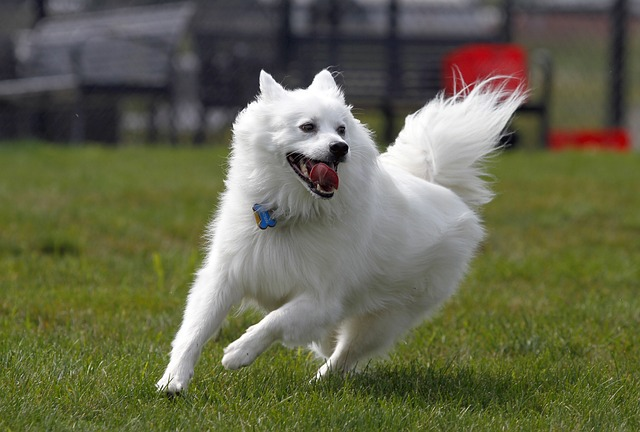
1. Appearance: Canadian Eskimo Dogs are large, powerful dogs with a well-muscled build. They have a thick double coat that helps protect them from harsh Arctic conditions.
They come in various coat colors, including white, black, gray, and sable. They have erect ears, a bushy tail, and a broad head with a strong jaw.
2. Temperament: Canadian Eskimo Dogs are known for their loyalty, intelligence, and independence. They have a strong pack instinct and are usually friendly and affectionate with their family.
They can be reserved with strangers and have a natural instinct to protect their loved ones.
3. Intelligence and Training: Canadian Eskimo Dogs are intelligent and quick learners. However, they can also be stubborn and independent, requiring consistent and patient training methods.
Early socialization and obedience training are crucial to ensure they grow up to be well-behaved and well-adjusted dogs.
4. Socialization: Proper socialization is essential for Canadian Eskimo Dogs. They should be exposed to various people, animals, and environments from a young age to develop good social skills and prevent any potential aggression or fearfulness.
Positive experiences and gentle introductions are important for their well-being.
5. Health: Canadian Eskimo Dogs are generally a healthy breed, but they can be susceptible to certain health issues, including hip dysplasia, progressive retinal atrophy (PRA), and certain genetic conditions.
Regular veterinary check-ups, a balanced diet, and proper exercise are important for their overall health and well-being.
6. Family Companionship: Canadian Eskimo Dogs can make loyal and devoted family companions when provided with proper care, training, and socialization.
They thrive in homes where they receive plenty of love, attention, and opportunities for physical and mental stimulation. However, their independent nature and working heritage may not suit every household.
5. Miniature Husky
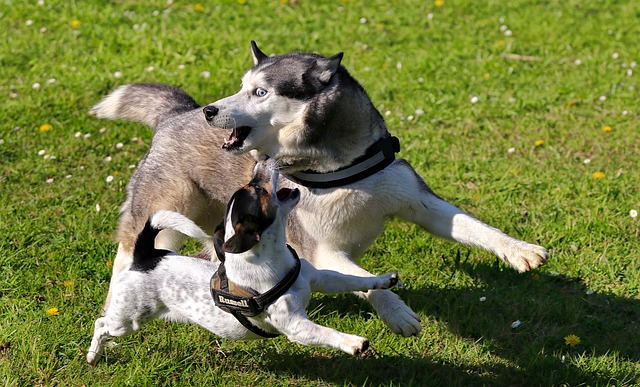
1. Appearance: Miniature Huskies are smaller versions of the standard Siberian Husky breed. They have a similar appearance, with a compact and well-proportioned body. They have a thick double coat, erect ears, and striking blue or multicolored eyes. They come in a variety of colors and markings, resembling their larger counterparts.
2. Size: Miniature Huskies are bred to be smaller in size compared to standard Siberian Husky. They typically weigh between 15 to 35 pounds and stand around 14 to 17 inches at the shoulder.
Their smaller stature makes them more suitable for living in apartments or homes with limited space.
3. Temperament: Miniature Husky generally inherit the friendly, outgoing, and sociable nature of Siberian Husky. They are known for their playful and energetic personalities.
They are typically good with children and enjoy being part of the family. However, like all huskies, they can be independent and may require consistent training and socialization.
4. Intelligence and Training: Miniature Huskies are intelligent and can be quick learners. However, they may exhibit a stubborn streak, which can make training a challenge at times.
Positive reinforcement training methods, consistency, and patience are key to successfully training a Miniature Husky.
5. Socialization: Proper socialization is important for Miniature Huskies to ensure they grow up to be well-behaved and well-adjusted dogs. They should be exposed to various people, animals, and environments from a young age.
Early socialization helps them develop good manners, reduces the likelihood of behavioral issues, and promotes their overall confidence.
6. Health: Miniature Huskies are generally a healthy breed. However, they may still be prone to certain health issues that affect Siberian Husky, such as hip dysplasia, eye problems, and certain genetic conditions.
Regular veterinary check-ups, a balanced diet, and proper exercise can help maintain their overall health and well-being.
6. Greenland Dog

1. Appearance: Greenland Dogs are large and robust dogs with a strong and muscular build. They have a thick double coat that provides insulation in cold climates.
They come in various colors, including white, black, and gray. They have a broad head, erect ears, and expressive almond-shaped eyes.
2. Temperament: Greenland Dogs are known for their friendly and gentle nature. They are typically good-natured and enjoy being around people.
They are generally calm and patient, making them suitable for families with children. However, they can have a strong prey drive and may not be compatible with smaller pets.
3. Intelligence and Training: Greenland Dogs are intelligent and independent thinkers. They have a strong work ethic and are known for their problem-solving abilities.
However, they can also be stubborn, so training requires consistency, patience, and positive reinforcement techniques. Early socialization is important to shape their behavior and ensure they are well-behaved.
4. Socialization: Proper socialization is crucial for Greenland Dogs. They should be exposed to various people, animals, and environments from a young age to develop good social skills and prevent any potential aggression or fearfulness.
Positive experiences and gentle introductions are essential for their well-being.
5. Health: Greenland Dogs are generally a healthy breed, but they can be prone to certain health issues such as hip dysplasia and eye problems.
Regular veterinary check-ups, a nutritious diet, and regular exercise can help maintain their overall health and well-being.
6. Working Heritage: Greenland Dogs have a long history of working as sled dogs in the Arctic region. They have played a crucial role in transportation and hauling heavy loads in challenging conditions.
Their strength, endurance, and ability to work in harsh environments are highly valued.
7. Labrador Husky
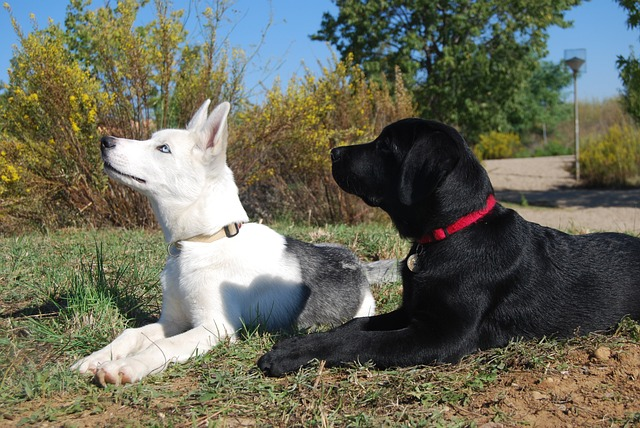
1. Appearance: It also known as the Labrador Husky Mix or Labrador Husky Hybrid, is a crossbreed between the Labrador Retriever and the Siberian Husky. Their appearance can vary, taking characteristics from both parent breeds.
They usually have a medium to large size, with a sturdy build. Their coat can be dense and double-layered, often in colors like black, gray, or sable.
2. Temperament: They are known for their friendly and outgoing nature. They tend to be sociable, affectionate, and good-natured, inheriting qualities from both the Labrador Retriever and the Siberian Husky.
They are often described as loyal and reliable companions, making them suitable for families and individuals alike.
3. Intelligence and Training: They are intelligent and trainable dogs. They typically respond well to positive reinforcement training methods, using rewards and praise to motivate them.
Early socialization and obedience training are important to shape their behavior and ensure they grow up to be well-behaved and obedient dogs.
4. Socialization: Proper socialization is crucial for Labrador Huskies. They should be exposed to different people, animals, and environments from a young age to help them become well-rounded and confident.
This early socialization can aid in preventing potential aggression or fearfulness and promote their ability to interact with others positively.
5. Compatibility with Children and Other Pets: Labrador Huskies are often good with children and can be gentle and patient. However, it is important to supervise interactions between dogs and young children and teach both how to interact appropriately.
They can also get along with other pets if properly socialized and introduced gradually.
6. Health: As a mixed breed, Labrador Huskies can inherit health conditions from both parent breeds.
It is essential to be aware of potential health issues common in Labrador Retrievers and Siberian Huskies, such as hip dysplasia, eye problems, and certain genetic conditions.
Regular veterinary check-ups, a balanced diet, and exercise can help maintain their overall health.
8. White Husky
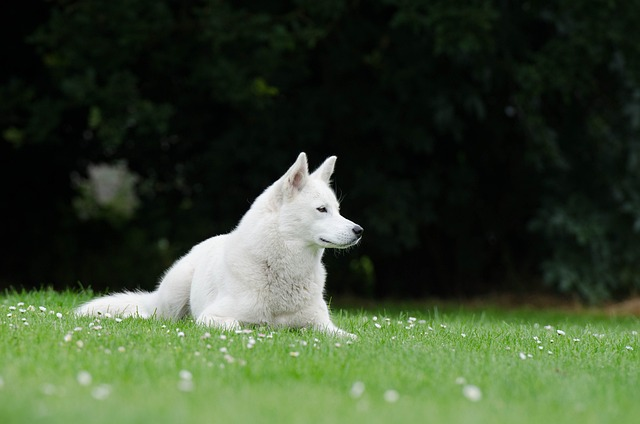
1. Appearance: White Husky, also known as White Siberian Huskies, is a variation of the Siberian Husky breed. They have a striking appearance with a predominantly white coat.
Their fur is often thick and plush, with some individuals having markings or patches in colors such as gray, cream, or tan. They typically have blue or multicolored eyes, which adds to their captivating look.
2. Coat and Eye Color: White Huskies have a double coat that helps protect them from cold weather. Their undercoat is dense and insulating, while the outer coat is straight and water-resistant.
The white coat color is a result of a genetic variation, and it does not affect the dog’s temperament or health. Many White Huskies also have captivating blue eyes, although some may have different eye colors or even heterochromia (two different colored eyes).
3. Temperament: White Huskies generally share the same breed and temperament as other Siberian Huskies. They are known for being friendly, outgoing, and sociable. They are pack-oriented dogs and often get along well with people, children, and other pets.
However, individual personalities can vary, and proper socialization and training are important for them to develop good manners and behavior.
4. Intelligence and Training: White Huskies are intelligent dogs that can be independent thinkers. They have a curious nature and can learn quickly. However, they may also exhibit a stubborn streak, so consistent and positive reinforcement training methods are recommended.
Early socialization and obedience training are crucial to ensure they grow up to be well-behaved and well-adjusted dogs.
5. Health: White Huskies are generally a healthy breed, with no specific health issues associated solely with their coat color. However, they can be prone to health problems that commonly affect Siberian Huskies, such as hip dysplasia, eye conditions, and certain genetic disorders.
Regular veterinary check-ups, a balanced diet, and proper exercise can help maintain their overall health.
6. Family Companionship: White Huskies can make loyal and affectionate family companions. They are known for their friendly and gentle nature, making them suitable for households with children and other pets.
However, their high energy level and exercise requirements should be considered to ensure they receive the necessary physical and mental stimulation in a family setting.
9. American Akita
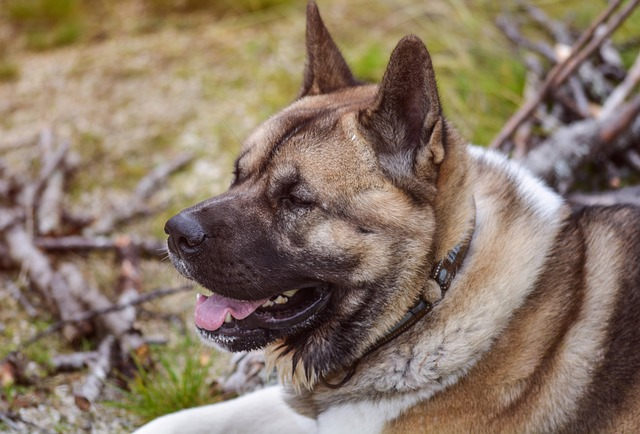
1. Origin: The American Akita, also known as Akita Inu or Akita, is a large and powerful breed that originated in Japan. They were originally used for hunting large game, such as bears and boars.
They were later bred as guard dogs and loyal companions.
2. Appearance: American Akitas are large, robust dogs with a solid build. They have a thick double coat that comes in various colors, including brindle, white, black, and brown.
They have broad heads, strong jaws, and deep-set eyes. Their appearance exudes strength and confidence.
3. Temperament: American Akitas are known for their loyalty and protectiveness towards their families. They are often described as dignified and courageous.
They can be reserved with strangers, but they form strong bonds with their owners. Early socialization is crucial to ensure they are well-behaved and comfortable around other people and animals.
4. Independent Nature: American Akitas have an independent and strong-willed nature. They are intelligent and may exhibit a stubborn streak at times.
They require consistent training and firm, yet gentle, handling. Positive reinforcement methods are effective in training them, and early obedience training is recommended.
5. Grooming: American Akitas have a thick double coat that requires regular grooming to keep it in good condition. They shed moderately throughout the year and experience heavier shedding during seasonal changes.
Regular brushing helps remove loose hair and keeps their coat healthy. Occasional bathing and nail trimming are also necessary.
6. Health Concerns: Like many large breeds, American Akitas can be prone to certain health issues. Common health concerns include hip dysplasia, progressive retinal atrophy (PRA), autoimmune disorders, and hypothyroidism.
Regular veterinary check-ups, a balanced diet, and providing appropriate exercise can help maintain their overall health.
7. Family Compatibility: American Akitas can make loyal and devoted family pets. They are known to be good with children when properly socialized and supervised. However, due to their size and strong protective instincts, early and ongoing socialization is essential.
They may not always get along with other dogs or animals, so careful introductions and management are necessary.
10. Sakhalin Husky

1. Origin: The Sakhalin Husky, also known as the Karafuto Ken, is a rare and ancient Japanese sled dog breed. They originated on Sakhalin Island, which is located between Japan and Russia.
They were historically used for transportation and to pull sleds, pulling in the harsh Arctic conditions.
2. Appearance: Sakhalin Huskies are medium to large-sized dogs with a strong and muscular build. They have a thick double coat that provides insulation against the cold.
Their coat comes in various colors, including black, white, gray, and a combination of these colors. They have erect ears, bushy tails, and dignified expressions.
3. Temperament: Sakhalin Huskies are known for their loyalty, intelligence, and resilience. They are highly adaptable to extreme weather conditions and have a strong work ethic.
They are typically friendly and gentle with their families, although they can be reserved and cautious around strangers.
4. Energy and Exercise: Sakhalin Huskies are energetic dogs that require regular exercise and mental stimulation. They have a high energy level and enjoy activities like hiking, running, and engaging in interactive play.
Providing them with outlets for their energy is essential to prevent boredom and potentially destructive behaviors.
5. Training and Socialization: Sakhalin Huskies are intelligent and trainable dogs. They respond well to positive reinforcement training methods that involve rewards and praise.
Early socialization is important to expose them to various environments, people, and animals, ensuring they grow up to be well-adjusted and well-behaved dogs.
6. Family Compatibility: Sakhalin Huskies can make loyal and affectionate family companions. They are generally good with children when properly socialized and supervised by male dogs.
However, their working heritage and independent nature may require experienced dog owners who can provide them with proper guidance, exercise, and mental stimulation.
FAQs
1. What are the different types of Huskies?
Some of the different types of Huskies include the Siberian Husky, Alaskan Malamute, Alaskan Husky, Canadian Eskimo Dog, Miniature Husky, Greenland Dog, and Labrador Husky.
2. How do the different types of Huskies vary in appearance?
The different types of Huskies vary in appearance, with variations in coat color, size, and physical features.
For example, Siberian Huskies often have a thick double coat with striking colors and distinctive markings, while Alaskan Malamutes have a larger build and a dense, fluffy coat.
3. Do all types of Huskies have similar temperaments?
While all Huskies share some common traits, such as being energetic and intelligent, their temperaments can vary.
For example, Siberian Huskies are known for their friendly and sociable nature, while Alaskan Malamutes have a more independent and strong-willed temperament.
It’s important to research and understands the specific characteristics of each type of Husky before bringing one into your home.
Final Notes
In conclusion, the world of Huskies is filled with diversity, each type bringing its own unique characteristics and charm.
From the striking Siberian Husky to the powerful Alaskan Malamute, and the energetic Alaskan Husky to the loyal Canadian Eskimo Dog, there is a Husky for every dog lover.
The Miniature Husky offers a smaller size without compromising the breed’s appeal, while the Greenland Dog and Labrador Husky showcase the resilience and endurance required in Arctic climates.
Whether you seek a loving family companion or a working partner, Huskies possess intelligence, energy, and beauty that set them apart.
It’s important to remember that each Husky type may have specific needs and temperaments, so thorough research and responsible ownership are crucial.
By understanding and meeting their requirements, you can experience the joy of sharing your life with these remarkable dogs and embark on an adventure like no other.
